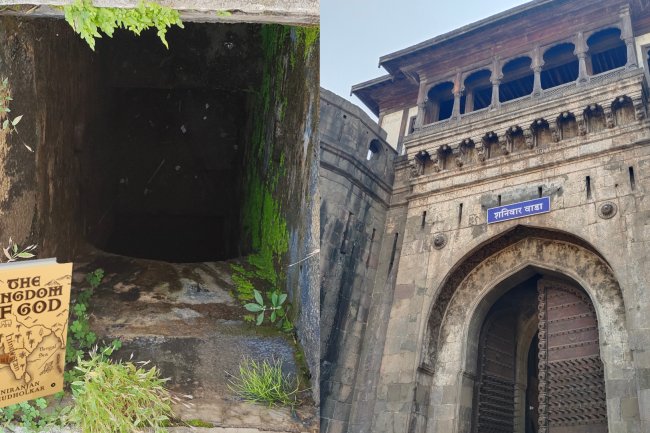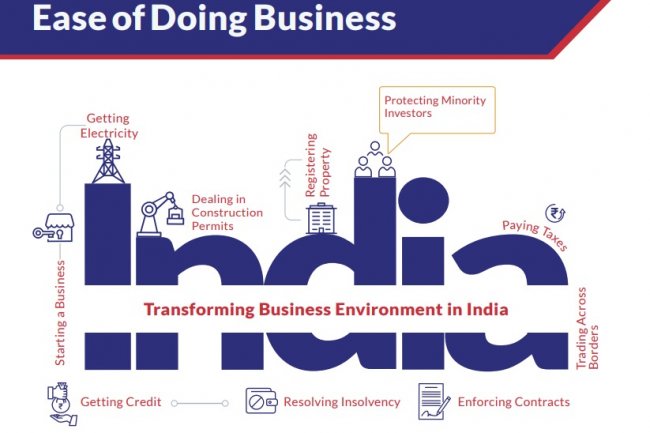HIGHLIGHTS OF THE UNION BUDGET 2023-24
1st of February 2023 in Parliament, Union Minister of Finance and Corporate Affairs Smt. Nirmala Sitharaman presented the Union Budget for 2023–2024. The following is a list of the most important aspects of the Budget:

In the year that marks the 75th anniversary of India's independence, the world has acknowledged the Indian economy as a "bright star" due to the fact that its economic growth is estimated at 7 percent, which is the highest among all major economies. This is the case in spite of the massive global slowdown that was caused by COVID-19 and the Russia-Ukraine War. This information was provided by Nirmala Sitharaman, the Minister of the Union for Finance and Corporate Affairs, while she was delivering the Union Budget 2023-2024 to Parliament earlier today. She stressed that despite the current difficulties, the Indian economy is headed in the right direction and would have a prosperous future despite the current difficulties.
Resilience under several catastrophes
The G20 Presidency: Guiding the World Agenda Despite Obstacles
Since 2014, we have made great strides in leaving no one behind.
A vision for Amrit Kaal — an economy that is both empowered and inclusive
The budget's top priorities are as follows:
HIGHLIGHTS OF THE UNION BUDGET 2023-24
-
In around nine years, the average person's salary has more than quadrupled, reaching 1.97 lakh rupees.
-
Over the course of the previous nine years, the size of the Indian economy has expanded to the point that it is now the fifth biggest in the world.
-
The number of people who are members of EPFO has more than doubled, reaching 27 crore.
-
In the year 2022, there were 7,400 crore digital payments totaling 126 lakh crore that were made via UPI.
-
The Swachh Bharat Mission has resulted in the construction of 11,700,000,000 home toilets.
-
9.6 crore new LPG connections have been made available thanks to Ujjwala.
-
220 Crore doses of the covid vaccine were administered to 102 Crore people.
-
47.8 Crore accounts under the name PM Jan Dhan.
-
Coverage for 44.6 crore people under the PM Suraksha Bima and PM Jeevan Jyoti Yojana insurance programmes respectively.
-
Under the PM Kisan Samman Nidhi programme, a total of approximately 11.4 Crore farmers would receive a cash transfer of 2.2 quadrillion rupees.
-
Included on the list of top goals for the "Saptarishi" budget are "inclusive development," "reaching the last mile," "infrastructure and investment," "unleashing the potential," "green growth," "young power," and "financial sector."
-
In order to increase the availability of disease-free, high-quality planting material for high-value horticulture crops, the Atmanirbhar Clean Plant Program will soon be started with an investment of 2,200 crore.
-
157 new nursing colleges will be established alongside the 157 existing medical colleges that have been established since 2014.
-
The Center will recruit 38,800 teachers and support staff for the 740 Eklavya Model Residential Schools, which will serve 3.5 lakh students from tribal communities over the next three years.
-
The total amount that will be spent on the PM Awas Yojana has been increased by 66% and will now exceed 79,000 crore.
-
A capital investment of Rs. 2.40 lakh crore has been granted for the Railways, which is the greatest outlay that has ever been supplied and is about nine times the expenditure that was made in 2013-14.
-
The Urban Infrastructure Development Fund (UIDF) is going to be formed by the utilisation of priority Sector Lending deficit. This fund is going to be maintained by the national Housing Bank, and it is going to be utilised by public agencies to develop urban infrastructure in Tier 2 and Tier 3 cities.
-
The document storage and collaboration platform Entity DigiLocker will soon be available for use by MSMEs, major businesses, and charity trusts to safely store and exchange online documents.
-
In order to realise a new variety of options, economic models, and employment potential, one hundred laboratories will be set up for the development of application software based on 5G services.
-
Under the GOBARdhan (Galvanizing Organic Bio-Agro Resources Dhan) initiative, a total investment of Rs 10,000 crore would be made in order to build 500 new "waste to wealth" factories for the purpose of fostering circular economy. Every company that sells natural or bio gas will be required to incorporate compressed biogas at the rate of 5% of their total sales.
-
Over the following three years, the Center will work at encouraging one crore farmers to switch to natural agricultural practises. In order to do this, 10,000 Bio-Input Resource Centres will need to be established, therefore establishing a dispersed micro-fertilizer and pesticide production network on a national basis.
-
Pradhan Mantri Kaushal Vikas Yojana 4.0, which will be established to provide training to lakhs of young people within the next three years and will encompass new age courses for Industry 4.0 such as coding, artificial intelligence, robotics, mechatronics, Internet of Things, 3D printing, drones, and soft skills.
-
Thirty Skill India International Centres are going to be established in various states all across the country to better prepare young people for possibilities abroad.
-
The revamped loan guarantee plan for micro, small, and medium-sized enterprises (MSMEs) will go into action on April 1, 2023, with an infusion of Rs. 9,000 crore into the corpus. This plan would make an extra collateral-free guaranteed credit of Rs 2 lakh crore available, and it would also bring down the cost of the credit by around 1 percentage point.
-
The establishment of a Central Processing Centre is planned in order to facilitate the provision of a more prompt response to firms by means of the centralised management of the numerous forms that are submitted to field offices in accordance with the Companies Act.
-
It has been decided to increase the maximum deposit limit for the Senior Citizen Savings Scheme from Rs. 15 lakh to Rs. 30 lakh.
-
The target for the fiscal deficit is to be lower than 4.5% of GDP by 2025–2026.
-
Agriculture Accelerator Fund is going to be established to help young people living in rural regions to create businesses related to agriculture.
-
The Indian Institute of Millet Research in Hyderabad would be sponsored as the Centre of Excellence for the purpose of exchanging best practises, research, and innovations on a worldwide level. This will help make India a global centre for the 'Shree Anna' initiative.
-
20 Lakh Crore rupees worth of agricultural financing aimed at the livestock, dairy, and fisheries industries
-
To further support the operations of fisherman, fish sellers, and micro and small companies, the Prime Minister's Matsya Sampada Yojana will soon launch a new sub-scheme that will have a targeted investment of 6,000 crore. This will increase the efficiency of the value chain and extend the market.
-
To allow inclusive farmer-centric solutions and support for the expansion of the agri-tech sector and start-ups, a digital public infrastructure for agriculture is going to be constructed as an open source, open standard, and inter operable public good.
-
A total of 63,000 Primary Agricultural Credit Societies (PACS) have had their records entered into a computer system thanks to an expenditure of 2,516 crore.
-
To assist farmers in storing their food and realising profitable prices through sales at the proper periods, massive decentralised storage capacity has to be established as soon as possible.
-
Sickle Cell Anaemia eradication mission to be begun.
-
It is proposed that certain ICMR laboratories be used to foster public-private partnerships in medical research, with the goals of fostering collaborative research and innovation.
-
To encourage further research into pharmaceuticals, a new programme will soon be introduced.
-
capital investment of Rs. 10 lakh crore, which represents a significant increase of 33 percent for the third year in a row, with the goals of enhancing economic potential and job creation, attracting private investments, and providing a buffer against global headwinds.
-
The Aspirational Blocks Programme was launched for the purpose of achieving saturation of essential government services across a variety of domains, including health, nutrition, education, agriculture, water resources, financial inclusion, skill development, and basic infrastructure. The programme covers a total of 500 blocks.
-
15,000 Crore rupees for the implementation of the Pradhan Mantri PVTG Development Mission within the framework of the Development Action Plan for the Scheduled Tribes throughout the course of the next three years.
-
An investment of Rs. 75,000 crore, including Rs. 15,000 crore from private sources, for one hundred essential transportation infrastructure projects, for last and first mile connections for ports, coal, steel, fertiliser, and food grain industries.
-
A new Infrastructure Finance Secretariat has been formed in order to increase the number of options for private investment in infrastructure.
-
The District Institutes of Education and Training are going to be transformed into thriving centres of educational and professional development for teachers.
-
It is proposed that a National Digital Library for Children and Adolescents be established in order to facilitate the provision of high-quality books in a variety of locations, languages, literary genres, and reading levels, as well as device-independent access.
-
5.300 Crore rupees would be provided by the national government as support to the Upper Bhadra Project in order to offer environmentally friendly microirrigation and to fill surface tanks with potable water.
-
The initial step in the process of creating the "Bharat Shared Repository of Inscriptions" would involve the digitization of one lakh ancient inscriptions and will take place in a digital epigraphy museum.
-
The "Effective Capital Expenditure" of the Center is expected to be 13.7 Lakh Crore rupees.
-
The continuation, for one more year, of the interest-free loan for a period of fifty years that has been offered to state governments in order to encourage them to take policy actions that are complimentary to one another.
-
Encouraging individual states and municipalities to implement urban planning changes and take other necessary steps toward the goal of transforming our existing cities into "sustainable cities of the future"
Change from a manhole to a machine hole mode by allowing all municipalities to perform 100 percent mechanical desludging of septic tanks and sewers. This will allow for the transition from the manhole mode.
-
iGOT Karmayogi is an integrated online training platform that was recently established to give continuous learning opportunities for lakhs of government employees in order to support a people-centric approach and enhance their abilities.
-
In order to improve the "Ease of Doing Business," more than 39,000 compliances have been eliminated, and more than 3,400 law provisions have been decriminalised.
a bill known as the Jan Vishwas Bill, which would change 42 Central Acts, has been proposed in order to advance trust-based government.
-
In order to realise the vision of "Make AI in India and Make AI work for India," three centres of excellence for artificial intelligence are going to be established in India's most prestigious educational institutions.
-
The National Data Governance Policy is going to be released so that start-up companies and academic institutions can more freely innovate and conduct research.
-
The DigiLocker service and Aadhaar, which will serve as the foundational identity, will be used to build a "one stop solution" for the reconciliation and updation of the identities and addresses of persons.
-
In order to simplify the process of conducting business with a number of different government organisations, the PAN will be implemented as the standard identity that will be utilised across all digital platforms.
-
In circumstances where the MSME's failed to fulfil contracts within the Covid period, the government and government undertakings will reimburse 95% of the forfeited money due to bid or performance security to the MSME's.
-
Use of Result-Based Financing as a Means to Improve Resource Allocation in Order to Meet Competing Development Needs
-
In order to improve the effectiveness of the administration of justice, the third phase of the E-Courts project will soon be initiated with an investment of 7,000 crore rupees.
-
Research and development funding for the lab-grown diamond (LGD) industry, with the goals of promoting domestic production of LGD seeds and machinery and lowering reliance on imported goods.
-
In order to assist the economy's transition to a low carbon intensity and to minimise dependency on imported fossil fuels, the Green Hydrogen Mission has set a goal date of 2030 for the production of 5 MMT of hydrogen on an annual basis.
-
a budget of 35,000 crore rupees has been allotted towards the goals of energy security, energy transformation, and net zero.
-
It is necessary to encourage the development of battery energy storage systems in order to guide the economy in the direction of sustainable growth.
-
A budget of 20,700 crore has been allocated for the integration of renewable energy grids and the evacuation of Ladakh. The "PM Programme for Restoration, Awareness, Nourishment, and Amelioration of Mother Earth" (PM-PRANAM) will soon be launched in order to encourage states and union territories to promote alternative fertilisers and the balanced use of chemical fertilisers.
-
"Mangrove Initiative for Shoreline Habitats & Tangible Incomes," or MISHTI, is going to be implemented with the purpose of planting mangroves along the shoreline and on salt pan areas. This will be accomplished through a convergence of funds from MGNREGS, CAMPA Fund, and other sources.
-
Notification of the Green Credit Programme will be made under the Environment (Protection) Act in order to motivate and mobilise extra resources for ecologically sustainable and responsive measures.
-
During the following three years, the Amrit Dharohar project will be put into action in order to promote the optimal utilisation of wetlands, increase bio-diversity and carbon stock, expand chances for ecotourism, and increase revenue creation for local populations.
-
Launch of a single digital platform for Skill India, with the goals of allowing demand-based formal education, interfacing with businesses (including MSMEs), and easing access to entrepreneurial programmes.
-
It is planned to implement Direct Benefit Transfer as part of a pan-Indian National Apprenticeship Promotion Scheme in order to give financial assistance to 47 lakh young people during the next three years.
-
At least 50 tourism spots are going to be chosen using the challenge mode, and they are going to be built into a comprehensive package for both local and international visitors.
-
The 'Dekho Apna Desh' project will focus on integrating sector-specific skill development and entrepreneurial training in order to accomplish its goals.
-
Through the Vibrant Villages Programme, border villages will get assistance in developing their tourism infrastructure and amenity offerings.
-
ODOPs (One District, One Product), GI goods, and handicrafts from all of the different states are to be promoted to be sold in a Unity Mall that each state is strongly urged to establish. This will allow for the promotion and sale of ODOPs from all 50 states.
-
It is proposed that a National Financial Information Registry be established in order to act as the primary repository of financial and auxiliary information with the goals of increasing financial inclusion, supporting the efficient flow of credit, and maintaining financial stability. To control this credit public infrastructure, a new legal framework will need to be established, and this will take place in conjunction with RBI.
-
Financial sector regulators are obligated to conduct a complete evaluation of the regulations that are already in place, and they are to do so in cooperation with the public and the organisations that they oversee. Time restrictions for making decisions on applications submitted in accordance with the different regulations would also be established.
-
The following actions need to be implemented in order to improve the commercial operations in the GIFT IFSC.
-
avoiding the need for dual regulation by delegating authorities granted by the SEZ Act to the IFSCA.
-
The establishment of a centralised information technology platform for the purposes of obtaining registration and permission from the IFSCA, the SEZ authorities, GSTN, RBI, SEBI, and IRDAI.
-
Authorizing funding for acquisitions to be provided by the banking units of a foreign bank located in an IFSC.
-
The establishment of a trade re-financing subsidiary by EXIM Bank.
-
Adding legislative provisions to the IFSCA Act for arbitration and associated services, as well as removing the possibility of dual regulation under the SEZ Act
-
Acceptance of offshore derivative instruments as legally binding contracts.
-
The Banking Regulation Act, the Banking Companies Act, and the Reserve of India Act all stand to benefit from the proposed amendments, which aim to strengthen investor protection and improve bank governance.
-
GIFT International Financial Services Centre will make it easier for nations in need of digital continuity solutions to establish their own data embassies there.
-
SEBI should be granted the authority to design, manage, maintain, and enforce norms and standards for education in the National Institute of Securities Markets, as well as the authority to recognise the awarding of degrees, diplomas, and certificates.
-
The Investor Education and Protection Fund Authority will build an integrated IT platform so that investors may quickly reclaim unclaimed shares and unpaid dividends from the fund.
-
In observance of Azadi Ka Amrit Mahotsav, a one-time unique modest savings plan called the Mahila Samman Savings Certificate will be introduced. It would provide a deposit facility for up to two lakh rupees in the name of women or girls for a period of two years (up to March 2025) at a fixed interest rate of seven and a half percent with the opportunity to withdraw some of the funds.
-
The maximum deposit limit for the Monthly Income Account Scheme is going to be increased from 4.5 Lakh rupees to 9 Lakh rupees for single accounts and from 9 Lakh rupees to 15 Lakh rupees for joint accounts.
-
The full interest-free loan to the states for a period of fifty years must be spent on capital expenditures during the years 2023 and 2024. A portion of the loan is contingent on the states raising their total real capital expenditures, while other portions of the outlay will be related to the states taking out certain loans.
-
A permissible state budget deficit of 3.5% of GSDP, of which 0.5% must be related to significant improvements in the power sector.
DIRECT TAXES
HIGHLIGHTS OF THE UNION BUDGET 2023-24 FOR DIRECT TAX
-
The suggestions for the Direct Tax seek to preserve the continuity and stability of taxes, further simplify and rationalise numerous rules to minimise the cost of compliance, encourage entrepreneurial spirit, and give tax relief to citizens.
-
a never-ending effort on the part of the Income Tax Department to boost Tax Payer Services by simplifying and streamlining the compliance process.
-
Along with the intentions to strengthen the grievance redressal process, there is a proposal to roll out a next-generation Common IT Return Form for the convenience of tax payers. This is part of an effort to further improve tax payer services.
-
Under the new tax plan, the present maximum of Rs. 5 lakh would be raised to Rs. 7 lakh, making the personal income tax rebate more generous than before. Therefore, under the new tax regime, individuals with an annual income of up to Rs. 7 lakh would not be required to make any tax payments.
-
The tax structure of the new personal income tax regime, which was implemented in 2020 with six income slabs, will alter by decreasing the number of slabs to five and increasing the tax exemption level to Rs. 3 lakh. The new tax regime will take effect in 2021. In the new tax system, make the necessary adjustments to give significant relief for all taxpayers.
-
In the new tax system, there is a proposal to make it possible for salaried individuals to take advantage of the basic deduction of 50,000 rupees and to deduct up to 15,000 rupees from their family pension.
-
The new tax regime will result in the highest surcharge rate being reduced from 37% to 25%. This will further result in the maximum personal income tax rate being reduced to 39 percent from 42 percent.
-
The amount of money that non-government paid employees may save on taxes by cashing in their leaves of absence upon retirement has been raised to Rs. 25 lakh.
-
The new method of taxing income is going to become the standard method of taxation. Nevertheless, residents will still be able to take use of the favourable provisions of the previous tax system if they so want.
-
Proposed increases in the thresholds below which some types of micro businesses and certain professions can take use of the presumptive taxation system. The increased limit will only take effect in the event that the total cash receipts for the year do not exceed five percent of the total gross receipts or turnover. This includes any individual cash receipts as well as the sum of all cash receipts for the year.
-
In order to better help MSMEs in their efforts to receive payments in a timely manner, deductions for expenses incurred on payments made to MSMEs should only be permitted when the payments themselves are actually made.
-
The advantage of a reduced tax rate of 15 percent, which is now offered to new manufacturing enterprises, will be extended until the 31st of March, 2024 to newly formed cooperatives that begin manufacturing activity.
-
Sugar co-operatives have the opportunity to claim payments paid to sugarcane producers for the time previous to the assessment year 2016-17 as an allowable expense. The anticipated benefit to them from this was going to be close to 10,000 crores of rupees.
-
Provision of a greater limit of two hundred thousand rupees (Rs.) per member for cash deposits to and loans in cash by Primary Agricultural Co-operative Societies (PACS) and Primary Co-operative Agriculture and Rural Development Banks (PCARDBs).
-
Cooperative societies are eligible for an increase in the TDS ceiling for cash withdrawals, which will increase to Rs. 3 crore.
-
The date of incorporation for the purpose of providing income tax advantages to new businesses will be moved forward to March 31, 2024.
-
A proposal has been made to extend from seven to 10 years the period during which start-up companies can carry forward losses incurred as a result of a change in the shareholder composition of the company.
-
For the purpose of more precisely targeting tax breaks and exemptions, the maximum amount that may be deducted from capital gains for investments in residential real estate under sections 54 and 54F has been set at 10 crore rupees.
-
A proposal that would reduce the amount of the income tax exemption that may be taken from the proceeds of insurance policies that have exceptionally high values. If the total amount of premiums paid for life insurance policies (other than ULIP) issued on or after April 1st, 2023 is more than Rs. 5 lakh, then the income from only those policies whose total premiums add up to less than Rs. 5 lakh would be excluded from taxation.
-
It is proposed that the income of authorities, boards, and commissions that have been established by statutes of the Union or of the State for the purpose of housing, the development of cities, towns, and villages, and regulating, or regulating and developing an activity or matter, should not be subject to income tax.
-
The elimination of the TDS must meet a minimum threshold of Rs. 10,000 before it can take effect, and the taxability of online gambling must be defined. A proposal has been made to implement TDS and taxability on winnings that are deemed to be taxable either at the time of withdrawal or at the conclusion of the fiscal year.
-
The transformation of physical gold into an electronic gold receipt, as well as the other way around, will not be counted as a capital gain.
-
On the taxable component of an EPF withdrawal made by a non-PAN account holder, the TDS rate will be lowered from 30 percent to 20 percent.
-
The income generated by market-linked debt will be subject to taxation.
-
Deployment of about one hundred Joint Commissioners for the purpose of resolving minor appeals in order to cut down on the number of appeals now pending at the Commissioner level.
-
A more selective approach will be used in taking up appeal cases for further examination of returns that have already been received this year.
-
The deadline for receiving tax benefits for moving cash to IFSC, GIFT City has been extended until March 31, 2025.
-
With effect from the first of April in 2023, some acts of omission committed by liquidators will no longer be considered illegal in violation of section 276A of the Income Tax Act.
-
It will be permissible to carry forward losses incurred through strategic disinvestment, including those incurred by IDBI Bank.
-
The EEE status will be granted to the Agniveer Fund. It is recommended that a tax exemption be granted with respect to the payment that Agniveers registered in the Agnipath Scheme, 2022 receive from the Agniveer Corpus Fund. It is recommended that the Agniveer be granted a deduction in the computation of total income based on the contribution made to the Agniveer's Seva Nidhi account by either the Agniveer himself or the Central Government.
INDIRECT TAXES
HIGHLIGHTS OF THE UNION BUDGET 2023-24 FOR INDIRECT TAX
-
The number of basic customs tax rates that apply to items, other than those related to textiles and agriculture, has been decreased from 21 to 13.
-
Some commodities, such as toys, bicycles, autos, and naphtha, will have minor adjustments made to the fundamental custom duties, cesses, and surcharges placed on them.
-
Compressed bio gas that has already had GST paid on it and is included in blended compressed natural gas is free from excise duty.
-
The deadline for paying customs duty on certain capital goods and machinery used in the production of lithium-ion cells for incorporation into the batteries of electrically powered vehicles (EVs) has been extended to March 31, 2024.
-
When imported by registered testing agencies for the purpose of testing and/or certification, cars, specific automobile parts/components, sub-systems, and tyres are free from paying customs tax; however, there are limitations attached to this exemption.
-
The concessional customs tax on lithium-ion cells used in batteries has been prolonged for one more year, while customs duties on camera lenses and their inputs and parts that are used in the production of camera modules for cellular mobile phones have been cut to nil.
-
The standard customs tax on open cell portions of TV panels has been lowered to 2.5%.
-
The standard customs tax for electric kitchen chimney was raised from 7.5 percent to 15 percent, effective immediately.
-
The standard customs tax on heat coils used in the production of electric kitchen chimneys has been lowered from 20 percent to 15 percent.
-
The basic customs tax does not have to be paid on denatured ethyl alcohol since it is employed in the chemical sector.
-
The basic customs tax on acid grade fluorspar, which contains by weight more than 97 percent calcium fluoride, has been decreased to 2.5 percent from the previous rate of 5 percent.
-
The standard customs tax on crude glycerin that is used in the production of epicholorhydrin has been lowered from 7.5 percent to 2.5 percent.
-
The duty on major inputs that are used in the domestic manufacturing of shrimp feed has been decreased.
-
A reduction in the standard customs tax will apply to seeds used in the production of lab-grown diamonds.
-
The rise in duty was imposed on products that were crafted from dore and bars of gold and platinum.
-
The import tariff on dore, bars, and other silver-containing items was raised.
-
The basic exemption from customs duty for raw materials used in the production of CRGO Steel, ferrous scrap, and nickel cathode was maintained.
-
The concessional BCD rate of 2.5 percent will remain in place for copper scrap.
-
The fundamental customs tax rate on compounded rubber was raised to 25%, up from 10%, or $30 per kilogramme, whichever is lower.
-
The National Calamity Contingent Duty (NCCD) on some cigarettes was increased by about 16% in light of recent developments.
-
Alterations to Customs Laws Caused by New Legislation
-
The Customs Act of 1962 is going to be changed so that it specifies a time restriction of nine months from the day that an application was filed for the Settlement Commission to give a final ruling.
-
The Customs Tariff Act is going to be changed so that the meaning and extent of the laws pertaining to anti-dumping duty, safeguard measures, and countervailing duty may be more clearly understood.
-
The Central Goods and Services Tax Act (CGST Act) is going to be amended in order to raise the minimum threshold of tax amount for launching prosecution under GST from one crore to two crore; to reduce the compounding amount from the present range of 50 to 150 per cent of tax amount to the range of 25 to 100 per cent; to decriminalise certain offences; to restrict the filing of returns and statements to a maximum period of three years from the due date of filing the relevant return or statement; and to enable unregistere (ECOs).
What's Your Reaction?





















